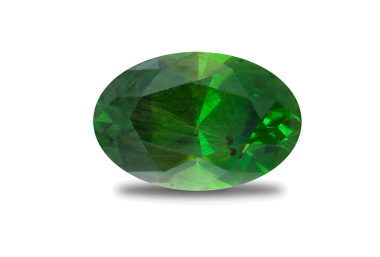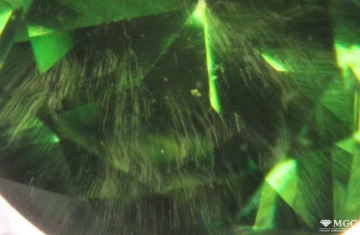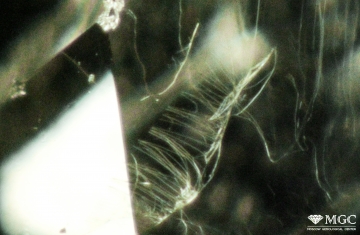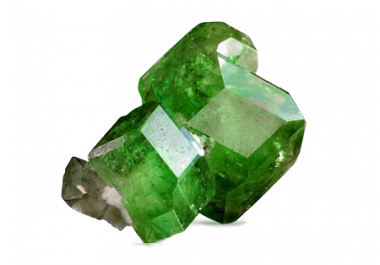open 10 am - 7 pm
laboratory is closed
Demantoid

Demantoid is the gemstone variety of the mineral andradite garnet, colored in various hues of green color with or without brown or yellow shades. The name of the mineral comes from the German (official language of the mining and geological industry in the 19th century) "diamante" - diamond and the ancient Greek "εἶδος" - a kind of appearance similar to the dispersion of light, like a diamond.
Chemistry: Ca3Fe2(SiO4)3;
Crystal system: Cubic, hexoctahedral crystal class (point symmetry group);
Color: Green, green with yellow and brown hues.
The isomorphous impurity Cr63+ with chromium substitution [Fe3+ – Fe3+] (Fe63+); жis the cause of the demantoid green color and; and Fe43+, реже - Ti4+ are cause of the yellow in the stone.
Identification properties
| Physical properties | |
|---|---|
| Mohs hardness: | 6.5-7 |
| Density: | from 3.80 to 3.86 (calculated 3.859) g/cm3 |
| Cleavage: | none |
| Fracture: | conchoidal |
| Optical properties | |
|---|---|
| Optical character: | isotropic, anomalous anisotropic |
| Refractive Index: | 1.855 – 1.895 (calculated 1.889 – 1.895) |
| Birefringence: | none; anomalous – 0.002-0.010 |
| Pleochroism: | none |
| Dispertion: | 0.057 (BG) |
| Luster: | vitreous |
Inclusions and structural inhomogeneities


Gem basic treatments
| Treatment | Goal |
|---|---|
| Heat treatment | Enhancing the green color |
| Diffusion dyeing (rare) | Enhancing the green color |
| Impregnation with high refractive glasses (for large stones) to fill the open cavities (rare) | Improving the apparent clarity of gem material |
| Large open cavities siltation with the synthetic compounds (rare) | Improving the apparent clarity of gem material |
Synthetic or Imitation gem materials
Synthetic analogs of garnet-demantoid for the jewelry are not produced.
The most commonly encountered synthetic demantoid is as follows:
- chrysolite (for small stones);
- synthetic garnets;
- synthetic spinels;
- doublet: garnet + glass;
- color glasses.


